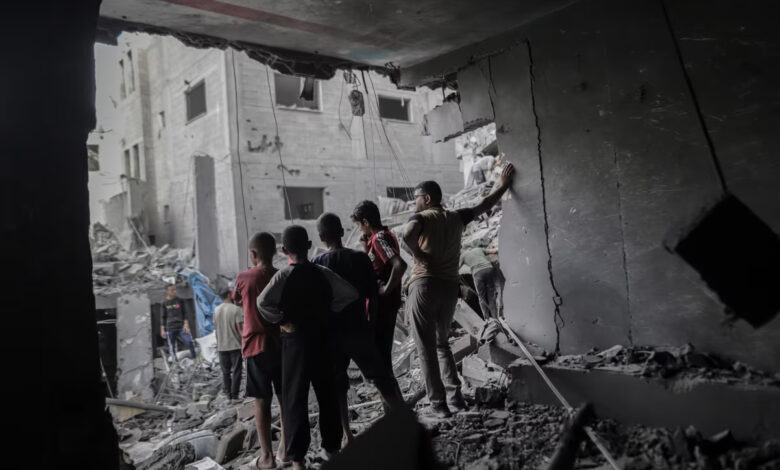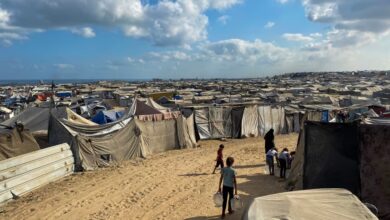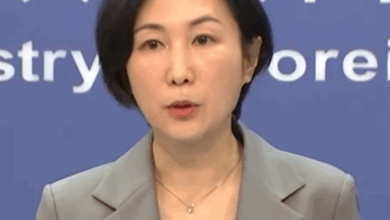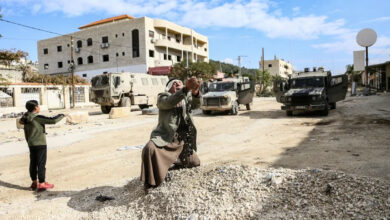
Anyone who looked at the situation in Gaza on Tuesday might reasonably have concluded that the ceasefire had collapsed.
Israeli forces in Gaza came under grenade and sniper fire in Rafah, according to the military, killing an Israeli soldier. In retaliation, Israel unleashed punishing strikes across Gaza that killed more than 100 people, according to the Palestinian Ministry of Health.
The US-brokered ceasefire looked like it had disintegrated. But by Wednesday morning, both Hamas and Israel had announced they were once again committed to the deal.
It was the second violent escalation since the ceasefire took effect on October 10. But, just like the fighting that occurred nine days later, when two Israeli soldiers and at least 36 Palestinians were killed, it was short, ending within a matter of hours.
Gaza’s new normal seems to be a ceasefire that is both fragile and durable. A truce that holds in general but can vanish in an instant, only to be restored within hours or days.
Until the next escalation.
This situation between all-out conflict and a comprehensive peace provides no closure: Palestinians will be in constant fear of the next wave of deadly strikes, while Israel will teeter perpetually on the brink of war.
US Secretary of State Marco Rubio said last week the ceasefire was “not going to be a linear journey.” It would have “ups and downs” and “twists and turns,” he said. Vice President JD Vance said yesterday there would be “little skirmishes here and there.” And yet both were optimistic about the ceasefire holding.
The deal was imposed in large part by the sheer willpower of US President Donald Trump, who reined in Israel, while mediators pressured Hamas to accept. It will take continued US interest to keep the deal intact, especially during the next phase, which requires the creation of an international force for Gaza and the disarmament of Hamas, among other difficult tasks.

The ceasefire’s fragility is a function of the chasm between what the agreement has so far accomplished and what it has yet to achieve. The fighting has largely stopped. Hamas has turned over the living hostages and more than half of the deceased. Israel has pulled back to the yellow line that demarcates the first withdrawal position inside Gaza.
But in the current limbo between the nearly complete first phase of the agreement and the far more difficult second phase, which requires a more complete withdrawal and an end to the war, Israeli forces occupy more than half of Gaza’s territory.
According to Muhammad Shehada, a Gaza expert with the European Council on Foreign Relations, that territory includes isolated Hamas cells trapped in tunnels and outside the militant organization’s command and control. With limited resources and no connection to Hamas’ remaining leadership, each cell is “a catastrophe in the making,” Shehada says.
“The closer those IDF vehicles come to a tunnel or to a hideout to those disconnected, isolated militants or the more they run out of food, the higher the chances that they emerge in battle with Israeli soldiers,” Shehada told CNN. “They would rather die in combat than die of starvation or wait for the IDF to find them.”
After the first major violation of the ceasefire on October 19, Hamas issued a statement saying that “contact with the remnants of our groups” in areas like Rafah had “been cut off since the resumption of hostilities in March.” It is these “remnants” that Shehada says are ticking “time bombs.”
“Hamas doesn’t even know how many are there that are still alive,” said Shehada.
Israel and Hamas have engaged in short, sharp escalations many times prior to this war. In 2018 and 2019, the two exchanged fire in rounds of hostilities that would frequently end within 48 hours. But now these escalations are almost exclusively in one direction, with Israel unleashing its firepower on Gaza against a depleted Hamas.
More than 200 Palestinians have been killed in Gaza since the ceasefire started, according to the Palestinian Ministry of Health, the vast majority during two days of escalation on October 19 and 28. Three Israeli soldiers have been killed in Gaza during the same period.
Yoav Limor, military and defense analyst for the right-wing Israel Hayom newspaper, says more conflict is inevitable, and it will take US involvement to keep the deal from falling apart.
“Hamas will remain Hamas: it will grow stronger and continue to carry out attacks. Anyone who believes it has changed does not understand the movement or the nature of the region,” said Limor. “That is why Washington must push forward and advance the next phase of the ceasefire deal and work to edge Hamas out of power. Otherwise, the situation could deteriorate.”

The US has sent a parade of its top officials to monitor the ceasefire and begin to create the mechanisms needed for the next phase of the deal, including humanitarian aid and the reconstruction of Gaza. It is a tremendous expense of political capital, but it has signaled to Israel – and to the region – that the White House remains engaged as all the details are still being worked out. The US is determined to keep the process moving forward, even if progress is incremental.
In the short-term, Limor said, “it is likely that the ceasefire will hold this familiar patten of violence and response.” Israel is preparing for an election year during which Prime Minister Benjamin Netanyahu will be wary of resuming a total war. Hamas is also looking for a hudna, or period of calm, in which it can recuperate and rebuild, he said.
To break this pattern of a ceasefire marred by violent escalations – and prevent the emerging new normal – requires major progress on some of the 20-point plan’s most difficult conditions, including the disarmament of Hamas and creating new governance in Gaza.
At a press conference on Wednesday, Qatari Prime Minister Sheikh Mohammed bin Abdulrahman Al Thani said Hamas was willing to cede power in Gaza, even as he acknowledged that Doha was “trying to push them all in order to get to a point where they acknowledge that they need to disarm.”
He said Hamas needs to be ready to move to the next stage of the deal. “We need to make sure the Palestinians are safe and the Israelis are safe … creating a political horizon for the Palestinian people and creating a Palestinian agency that will be able to be the sole holder of arms.”
If that cannot be done, Israelis and Palestinians will remain in limbo, trapped in a short-term truce without peace that offers no long-term prospect for a solution.




